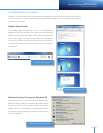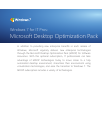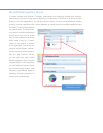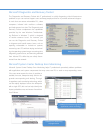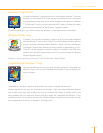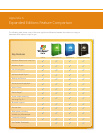
120 121
Microsoft Enterprise Desktop Virtualization
Microsoft Enterprise Desktop Virtualization (MED-V), enables deployment and management of Microsoft
virtual PC Windows desktops to address key enterprise scenarios. Primarily, MED-V helps enterprises
upgrade to the latest version of Windows even when some applications are not yet functional or
supported. MED-V builds on top of Virtual PC to run two operating systems on one device, adding virtual
image delivery, policy-based provisioning, and centralized management.
MED-V helps to minimize application-to-operating system compatibility issues while accelerating oper-
ating system migration. In fact, MED-V helps remove the barriers of upgrading the operating system.
By delivering Windows XP or Windows 2000 productivity applications in a Virtual PC, you can complete
testing more quickly and manage incompatible applications after the upgrade. MED-V also gives users
a seamless experience because virtualized applications can be accessed from the standard desktop Start
menu and appear alongside native applications.
When you add MED-V to a Microsoft Virtual PC, you’ll get the following administration capabilities:
• Virtual images repository and delivery to provide mechanisms for simplifying the process of
creating, testing, delivering, and maintaining virtual images from a central location.
• Centralized management and monitoring to help administrators manage the entire life-cycle of
virtual machines deployed on desktops throughout the enterprise
• Usage policy and data transfer control on the MED-V client to enforce user or group usage poli-
cies, access permissions to virtual images, and data transfer permissions
Windows 7 for IT Pros:
Microsoft Desktop Optimization Pack



